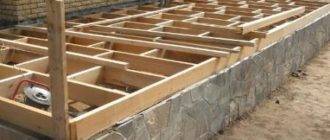When designing staircase structures, you cannot ignore the railings for stairs, because they are an important part of the architectural ensemble of the entire structure. On the one hand, the fences are responsible for safety when moving up the stairs, and on the other, they are the main element of the decor.
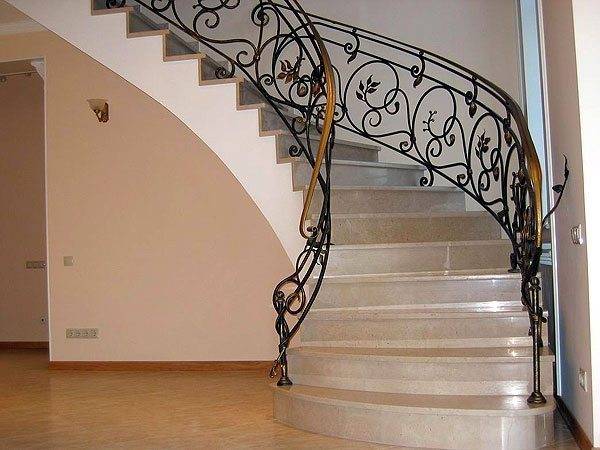
The visual perception of the entire structure and how it fits into the interior of the room depends on the stair handrails. Next, we will look at what a railing is, what they are and how to make high-quality and practical railing for stairs with your own hands.
General information
Railings are called stair rails. First of all, they protect a person from falling out of the stairs and serve as a support when moving.
Stair rails consist of the following elements:
- Balusters. They are support posts to which the handrail is attached. They perform a load-bearing and decorative function.
- Fencing fillers. This element is needed to fill the space between the balusters. They provide safety and at the same time serve as an element of decoration of the railing. Placeholders are not always used, however, if there are children in the house, then they must be installed.
- Handrails. This element serves as a support during movement. They can be installed on one or both sides of the flight of stairs. The handrails are attached either to the balusters or directly to the wall.
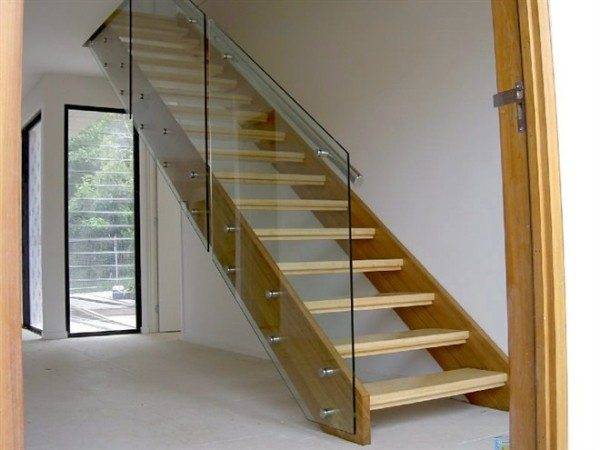
Special attention should be paid to fencing fillers, as there are several types of them:
- Classic - consist of racks located at an angle or vertically. Racks can be curly to perform decorative functions.
- Solid panels. This type of fencing is a solid sheet that is installed between the steps and the handrail.
- With crossbars - support drains are interconnected by horizontal strips, which are installed parallel to the handrails. Most often, modern stair railings are made with crossbars.
- Artisticwhen the space between the stairs and the handrail is filled with all kinds of patterns.
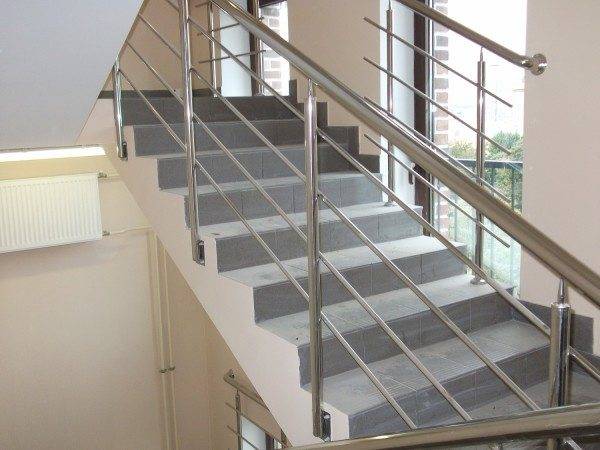
Note! In accordance with safety requirements, all stairs that have more than three feet must be equipped with a guard.
Railing types
Before proceeding with the design, you need to figure out what types of railings for stairs exist in order to make the right choice. First of all, fences differ in the material from which they are made.
There are the following types of handrails for stairs:
- Wooden;
- Metallic;
- Combined (metal and glass or wood);
- PVC;
- Brick, etc.
In home construction, metal and wooden fences are most often used. Metal products, as a rule, look light and are distinguished by an openwork shape. Wooden ones can add warmth and comfort to the atmosphere of the room.
Metallic
Metal stairs are of different types.
Most often you can find steel railings for stairs, products from:
- Aluminum;
- Cast iron;
- Gland;
- Brass.
Aluminum good because it is not afraid of corrosion, moreover, it is easy to install. Sometimes such properties are decisive when choosing a material. However, if the strength of the fence is important, then aluminum is not suitable.
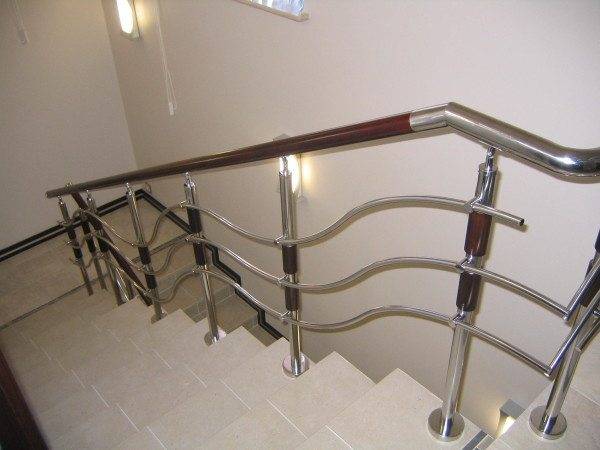
Most often, aluminum fences are prefabricated. They are used in rooms with gentle operating conditions.
Stainless steel is devoid of the inherent disadvantages of aluminum. Such products can be combined with other materials, thanks to which they are combined with almost any interior style.And the resistance of stainless steel to changes in the external environment allows the use of products not only for internal, but also external stairs.
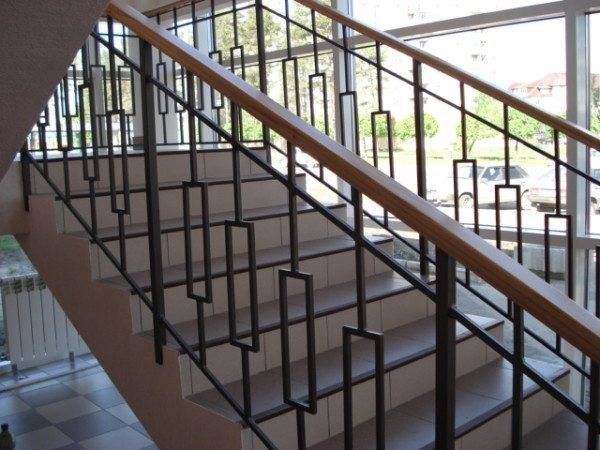
Most often, you can find a combination in the form of stainless steel posts and a wooden handrail. For outdoor use of a fence or in a high-tech style interior, racks and handrails made of brushed stainless steeland the filling is glass.
Railings for spiral metal stairs are often made of stainless steel, since it is extremely difficult to make a handrail from wood that will repeat the configuration of the stairs and have a complex spiral geometry.
Note! Stainless steel railings can be installed either over the balusters or from the side using flanges.
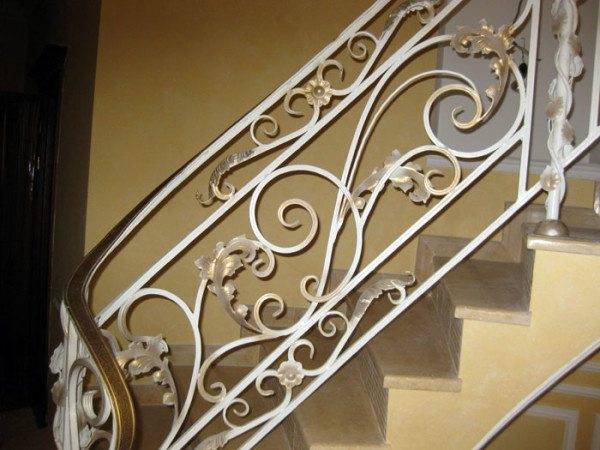
Forged fences deserve special attention. In terms of decorativeness, they have no analogues. In addition, when purchasing, you can choose from various options for endings, flange balusters, etc. Then the structure is welded from these elements and a truly unique product is obtained.
The only drawback of forged railings is their high price. But, given all the properties and features of such a design, we can say that the high cost is justified.
If cost matters to you, then you can pay attention to black steel fences. They have high strength and durability. As a rule, such railings are coated with powder paint, which makes them look very decent. Other advantages include the ability to choose almost any color that will match the interior.
Wooden railing
The most popular material for railings is still wood. Even if the railing is made of a different material, experts will probably advise you to use wooden handrails or PVC handrails for stairs that imitate wood.
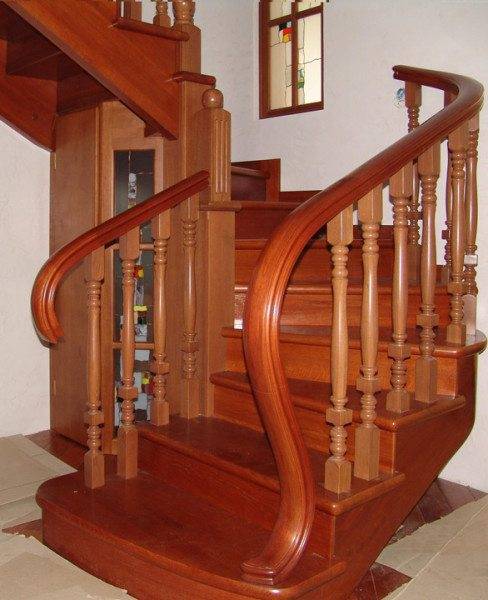
There are several reasons why wood products are so popular. First of all, this is the availability of non-elite wood species, an attractive appearance and environmental friendliness. In addition, the wooden handrails are pleasant to the touch.
However, along with the advantages, wooden fences have some disadvantages. The most unpleasant of them is the relative fragility, since the tree is susceptible to external influences, such as high humidity, temperature changes, etc. Valuable species are quite expensive.
However, if you use high-quality wood and properly process the surface of the paintwork, then you can significantly extend the durability of the products.
Handrail manufacturing and installation
Design
Before you start making fences, you should see the desired result on paper. Therefore, sketches of handrails for stairs are an integral part of the design. It is desirable that the dimensions of the structure are indicated on them.
Note! In accordance with existing standards, the height of the fence must be at least 900 mm.
It is not at all necessary to draw a drawing by hand. You can use ready-made photographs or computer graphics. The most important thing is that you have before your eyes a sample of what you want to get in the end. Thus, it will be easier to complete all the details of the fence or pick them up in the store.

I must say that the independent manufacture of handrails for stairs does not mean that all the details must be done by hand. It is very difficult to make many elements on your own, for example, handrails for spiral staircases.
Therefore, some components can be bought ready-made. Sometimes, in general, balusters and railings for stairs are sold as a constructor, which only remains to be assembled on site. If you want to save time, then prefabricated structures are the ideal option, however, in this case, you will have to forget about the individual project.
Mounting
When all the details are completed or purchased, you can proceed to the most crucial moment - the installation of the railings.

The installation instructions for the handrail are as follows:
- First of all, it is necessary to outline the places on the steps where the racks will be located. Balusters should be installed at a distance of 5-10 cm from the edges of the steps and 30-60 cm against each other.
- Then the first and last bearing pillars are installed. To do this, holes of the corresponding diameter and depth of about 10-12 mm must be drilled in the steps.
- A thread should be pulled between the installed posts, and check that the markings for the balusters are strictly on the same line.
- Then the balusters are installed. The verticality must be checked with a building level.
- Next, you need to mark the handrail and drill holes for fastening, and then install the handrail.
- If girders are used as fillers, then they must be cut into pieces of the required length. On the racks, you need to outline the attachment points for the crossbars, drill holes and fix the strips.
Advice! If there is a small child in the house, then the distance between the balusters of the crossbars must be chosen such that the head cannot get stuck between them.
Railings for spiral staircases are also installed, except that the main pillars are not mounted and, accordingly, there is no line marking. The main difficulty in this case is the installation of the handrail, which must be bent.
Output
Above, we examined the main existing types of fences and the most common way of installing them. If you show your imagination, you can combine different types and get a real work of art, which will become an ornament not only for the stairs, but for the entire room.
The video in this article will provide additional information on this topic.


